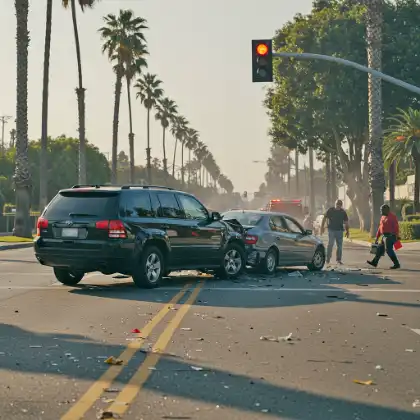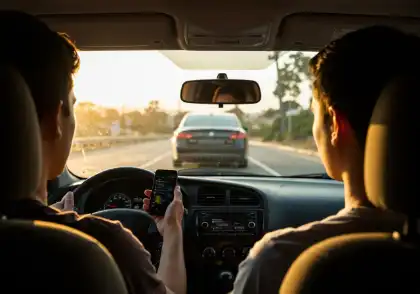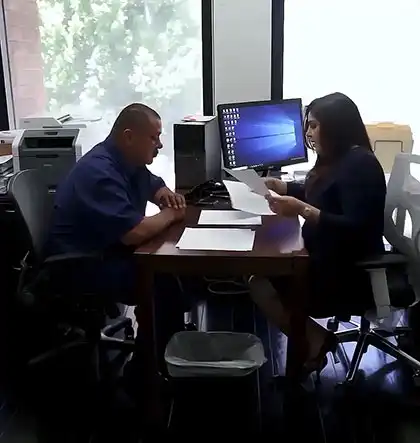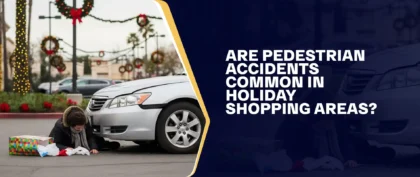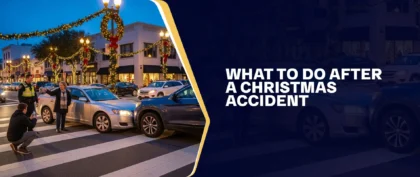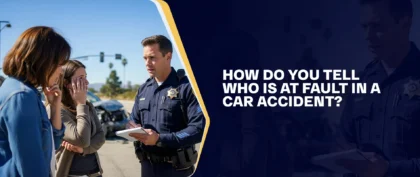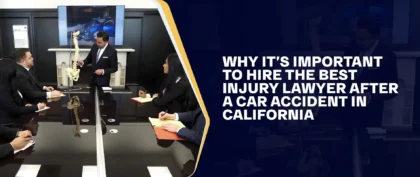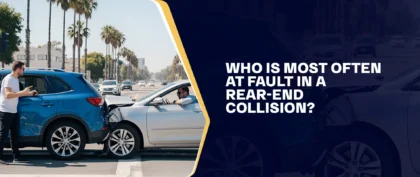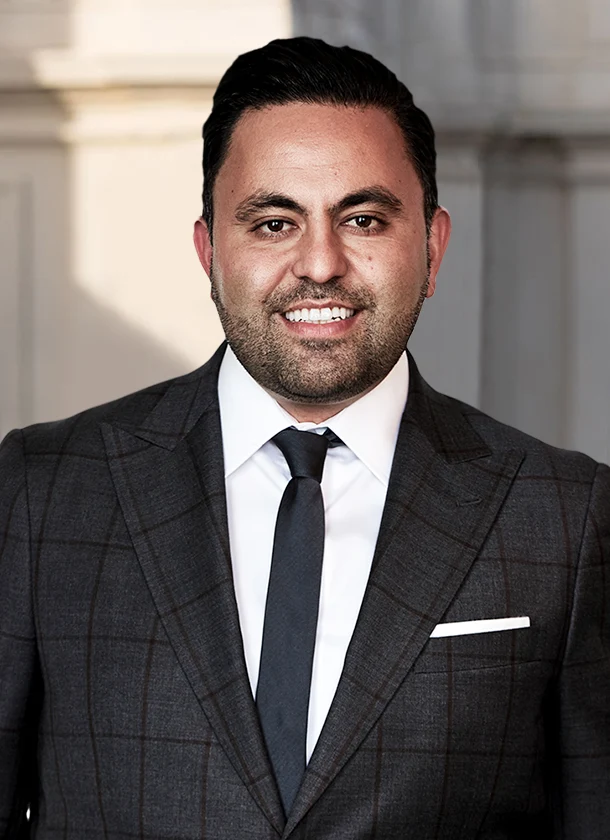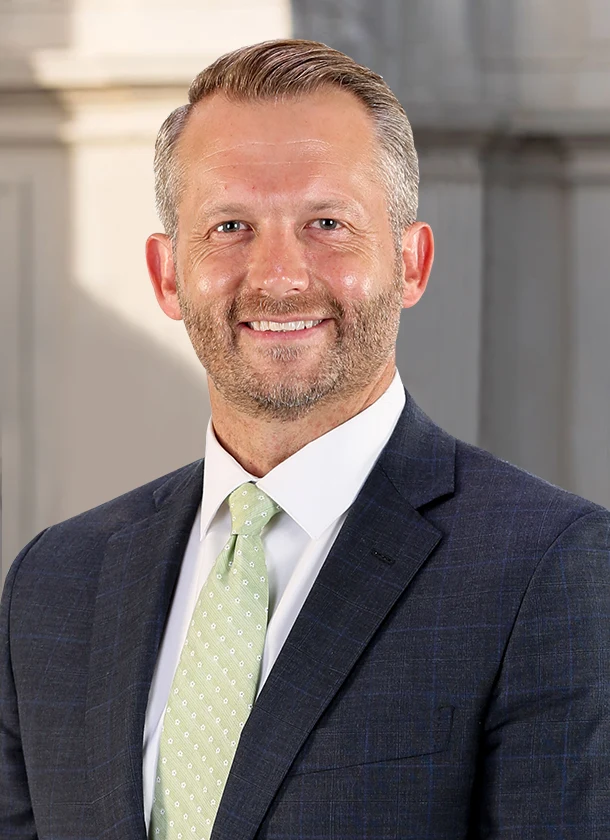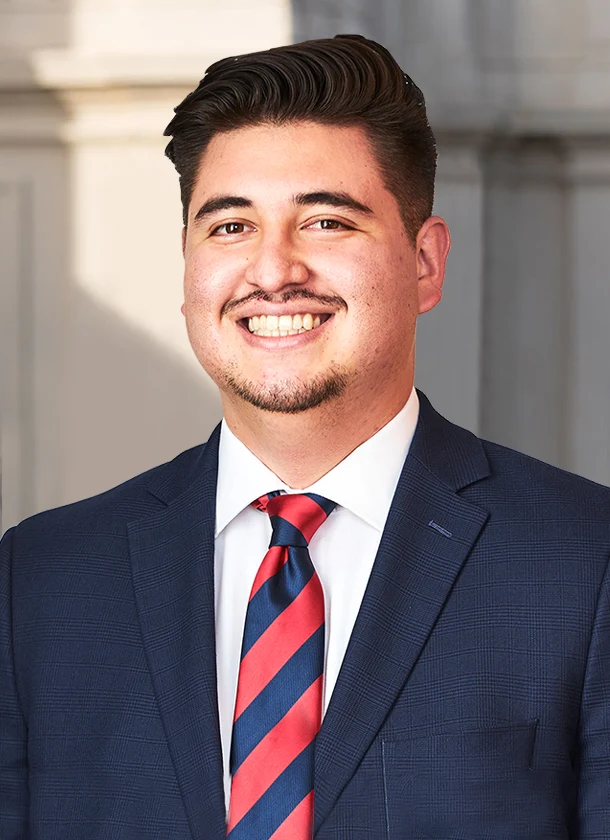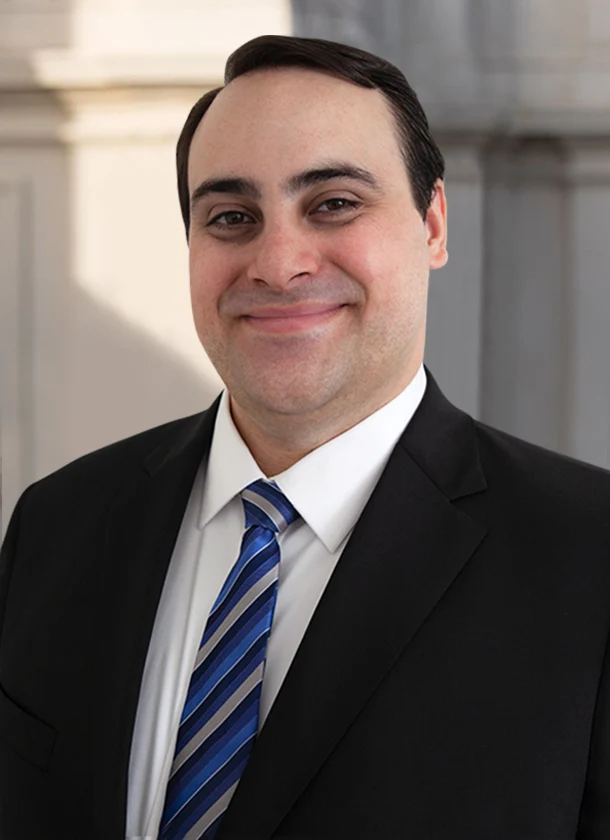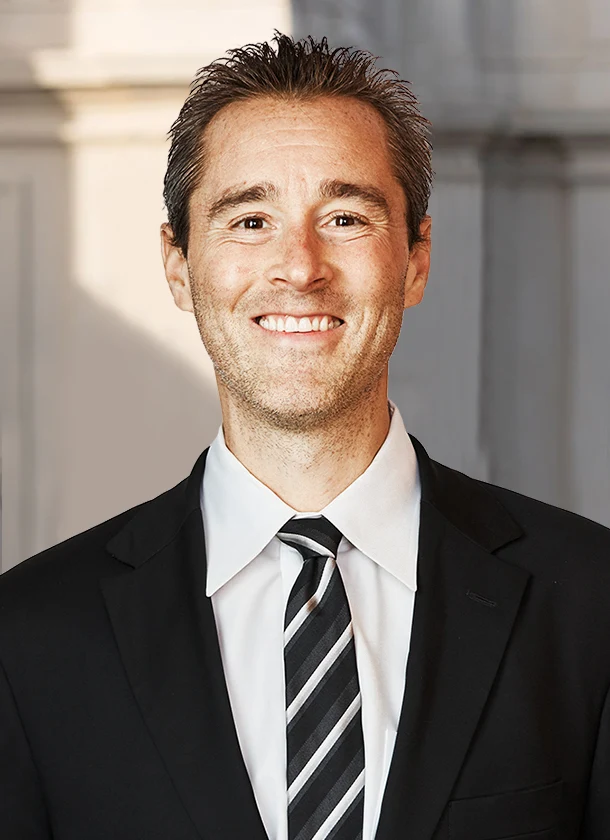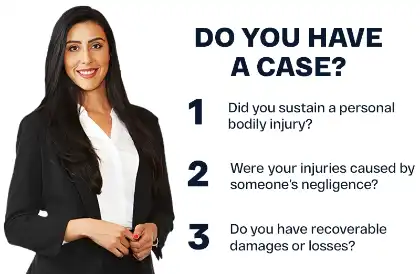TL;DR: Rear-end collisions are most likely at intersections due to sudden stops, congestion, and driver inattention. Highways, parking lots, and two-lane roads are also risky, especially in poor visibility or heavy traffic. These crashes cause 29% of all accidents and can lead to severe injuries. Call Arash Law at (888) 488‑1391 for free legal help.
Table of Contents
Rear-end collisions are more likely to occur in areas with sudden traffic changes, high congestion, and distracted drivers. Intersections are especially dangerous due to frequent stops and unpredictable driver behavior. Highways, parking lots, and two-lane roads also see a high number of these crashes.
According to the National Highway Traffic Safety Administration (NHTSA), rear-end collisions made up 29% of all traffic accidents in 2021 and can result in anything from minor damage to serious injury.
High-risk locations for rear-end collisions include:
- Intersections with traffic signals or stop signs.
- Highways during rush hour or sudden slowdowns.
- Parking lots and garages with limited visibility.
- Two-lane roads without turn lanes or shoulders.
If you were hurt in a rear-end accident, the car accident lawyers at AK Law Firm can help you understand your options for seeking compensation. Contact us for a free initial consultation.
There Is A Great Risk Of Rear-End Collisions At Intersections
More than 40% of all road crash injuries happen at intersections due to the constant need for drivers to stop, yield, or make split-second decisions. This data aligns with the high percentage of crashes that are rear-end collisions, as these areas demand quick reactions to changing lights, turning vehicles, or crossing pedestrians, conditions that increase the likelihood of sudden braking and driver error.
Unlike open roads, intersections often combine multiple hazards at once. Drivers may misjudge how quickly the vehicle ahead will stop, react too slowly to traffic signals, or fail to notice a car pausing for a pedestrian. Even a minor lapse in attention can result in a rear-end crash.
Common causes for rear-end collisions at intersections include:
- Frequent Stops and Slowdowns — Vehicles often need to stop or slow down quickly when a light changes or another car slows to turn.
- Sudden Changes in Traffic Flow — These changes can catch drivers off guard, making it harder for the vehicle behind to stop in time.
- Congestion — Heavy traffic increases the risk, as vehicles may be stopped or moving slowly, creating more opportunities for collisions.
Some driving conditions can lead to specific driver mistakes. Knowing where these errors usually happen can help you stay vigilant and prevent accidents. The table below shows common driver actions and the places where they’re most likely to occur.
| Driving Environment | Driving Mistakes In These Areas |
| Intersections | Red light running, failure to yield |
| Parking lots | Distraction, improper backing |
| Highways | Tailgating, speeding |
| Stop signs | Rolling stops, failure to look both ways |
| Residential areas | Speeding, ignoring pedestrians |
| Merging lanes | Unsafe lane changes, failure to signal |
Common rear-end collision examples in intersection accidents include:
- A car stops at a red light, and the driver behind fails to brake in time.
- One driver slows down to turn, but the vehicle behind doesn’t notice and hits it.
- Traffic stops at a green light for a pedestrian, and the driver behind doesn’t react fast enough.
- A driver speeds to beat a yellow light and hits a stopped vehicle.
To reduce the risk, always leave space between your vehicle and the one in front while waiting at a light.
Other High-Risk Places Where Rear-End Collisions Occur
Rear-end collisions can happen in many locations beyond intersections, and it’s important to recognize other places where they’re likely to occur. Staying alert in the areas below can help drivers avoid these crashes and stay safe on the road.
Garages And Parking Lots
Rear-end collisions are common in parking lots and garages, where drivers have to deal with tight spaces and vehicles moving in multiple directions. Distracted drivers, poor visibility, and tailgating are common causes of garage and parking lot accidents.
Here are some typical scenarios:
- You are backing out of a parking spot and don’t see a car coming behind you.
- Another driver suddenly reverses into your vehicle.
- A car pulls out of a parking space without checking, and you have to brake quickly to avoid hitting it. If another vehicle is following closely behind you, it may not be able to stop in time to avoid rear-ending you.
Parking lot accident lawyers can use surveillance footage and eyewitness accounts when determining the potentially liable parties in such cases.
Two-Lane Roads
Two-lane roads often lack dedicated turn lanes or wide shoulders, leaving little room to react when traffic slows down. These roads are common in rural and suburban areas, where curves, hills, or trees may limit visibility. Example:
- A driver follows too closely on a two-lane street near a school. The car in front slows down to turn into the parking lot, but it has to stop for pedestrians. The driver behind expects the turn to be quick and doesn’t leave enough space to stop, causing a rear-end collision.
Rear-end collisions are more likely when drivers follow too closely, speed around curves, or don’t expect slow vehicles. Poor judgment or distracted driving often plays a role.
Highways And Expressways
Distracted or speeding drivers may cause rear-end collisions when traffic slows down on highways and expressways. Here are some scenarios:
- A texting driver doesn’t notice that traffic has stopped and rear-ends the car in front.
- A motorist tries to merge into a carpool lane but misjudges the space and hits the car in front.
- In heavy traffic, a driver follows too closely and can’t stop in time when the car ahead slows down.
Motor vehicle accidents tend to happen more often during rush hour. This high-traffic period is when most people are driving to and from work. In most big cities, morning rush hour is usually from 6 to 8 a.m., and evening rush hour is from 4:30 to 6:30 p.m. Many cars are on the road during these times. Some drivers may be in a hurry and may heighten the risk of speeding-related accidents. Drivers who are rushing may be more likely to:
- Ignore stop signs.
- Make risky lane changes.
- Drive faster than the speed limit.
Rear-end collisions often happen because of a mix of risk factors, including why big rig trucks always get rear-ended in certain high-traffic conditions. Besides risky driving behaviors, adverse weather, dangerous road conditions, and auto defects (like brake failure) may also play a role.
Who Is At Fault In Rear-End Collisions In At-Risk Locations?
The rear driver may be at fault for not maintaining enough space. However, the front driver may also share responsibility.
Determining Fault In Rear-End Collisions
To prove who is at fault, you must show that the other driver acted carelessly and caused your injuries. Lawyers typically prove negligence through its four essential elements:
- Duty of Care — Every driver has a legal duty to drive safely and follow traffic rules. This responsibility includes keeping a safe distance between cars to avoid rear-end collisions.
- Breach of Duty — You must show that the other driver did not act responsibly. This breach could mean breaking traffic laws, driving distracted, or following too closely.
- Causation — You must show that the other driver’s actions directly caused your accident. In rear-end collisions, this could mean proving that the driver was driving too close behind, which led to the crash.
- Damages — You must have suffered some kind of harm. These could include:
- Injuries
- Medical bills
- Lost wages
- Property damage
- Pain and suffering
Injury attorneys may work with accident reconstruction specialists and other experts to determine who was at fault. Below are some examples where either the front or rear driver could be to blame:
When The Driver In The Back Is At Fault
Drivers must maintain a safe following distance to allow enough time to react and stop. If the front driver suddenly brakes, the rear driver may be responsible if they were following closely in the back and could not hit the brakes in time.
Here are some common reasons the rear driver may be at fault:
- Tailgating — Driving too closely reduces reaction time and increases the risk of a rear-end collision.
- Distracted Driving — If drivers are texting, eating, or not paying attention, they may not notice the car ahead slowing down or stopping.
- Speeding — If the rear driver is driving too fast, they may be unable to stop in time if the front driver brakes suddenly.
- Poor Weather or Road Conditions — Rain, fog, ice, or snow can make certain roads slippery. Even in bad weather, the driver behind must slow down and leave extra space.
- Impaired Driving — Taking alcohol, drugs, or certain medications before driving can slow reaction times and impair judgment.
- Unsafe Lane Changes — If the driver behind cuts in front of another car and then brakes suddenly, they could cause an accident.
When The Driver In Front Is At Fault
Rear drivers are often presumed responsible for rear-end collisions. However, the front driver may also be at fault if their actions create a hazard that the rear driver couldn’t reasonably anticipate or avoid. Examples include:
- Sudden Brakes — If the front driver stops quickly without a good reason, especially at high speeds or on a highway, the rear driver may not have enough time to react.
- Reversing — If the front driver suddenly puts the car in reverse and backs into the car behind them, they may be at fault.
- Broken Brake Lights — If the front car’s brake lights don’t work, the driver behind might not know the vehicle is stopping.
- Erratic Driving — If the front driver changes lanes or speeds without using signals, they may confuse other drivers and cause a crash.
- Unsafe Lane Changes — If the front driver suddenly changes lanes or cuts in too close and then slows down, they could be responsible for any resulting accident.
Determining liability in rear-end collisions may be challenging. Rear-end collision lawyers often use evidence like traffic camera footage, black box data, and eyewitness accounts to get a clearer picture of what might have happened.
California uses comparative fault rules, meaning both drivers can share blame. Your compensation may be reduced based on your share of fault. To understand more about this tort principle, it is advisable to get free accident lawyer advice from your legal counsel, if you already have one.
Simple Ways To Avoid Rear-End Collisions In Busy Areas
Now that you know where and why rear-end collisions often happen, here are some simple tips to help you stay safe:
Stay Focused And Alert While Driving
Distracted driving is one of the main reasons for traffic accidents. Avoid distractions when you’re behind the wheel to keep yourself and others safe. Here are some ways to stay focused:
- Stop in a safe place if you need to eat or drink.
- Put your phone on silent and keep it out of reach while driving.
- Limit how much you interact with passengers while driving. If you need to talk, keep the conversation focused on important things like directions or the route.
- Check your map (physical or digital) for directions before you start driving.
Keep Your Car Well-Maintained
Vehicle maintenance issues, such as worn brakes or damaged tires, increase your risk of a rear-end collision. To keep your car safe, follow a regular maintenance routine. Here are some tips:
- Check and adjust tire pressure regularly.
- Get your car’s oil changed on time.
- Rotate your tires to keep them balanced.
- Periodically inspect your brake pads and rotors, replacing them when necessary.
- Make sure all your brake lights and turn signals work correctly.
Learn More About Defensive Driving
Defensive driving skills help you avoid causing or getting into rear-end collisions with other drivers. Here are some defensive driving tips:
- Check your mirrors often to stay aware of what other drivers are doing. If someone is following too closely, try to move ahead safely or let them pass if you can.
- Use the “three-second rule” to keep enough space between you and the vehicle ahead. In poor weather, increase that distance.
- Brake smoothly and early. Gradually slow down when traffic ahead changes, rather than stopping abruptly.
- Use your signals early. Let other drivers know what you plan to do so they can react safely.
- When stopped at a red light, maintain a safe distance between your vehicle and the one in front of you. Staying focused while driving may also help avoid red light accidents.
Staying alert and driving safely can go a long way in preventing rear-end collisions. It is not only about protecting yourself. It is also part of your responsibility as a driver to help keep the roads safe for everyone.
If you are involved in a crash, traffic accident lawyers can guide you through the legal steps and help you understand your options.
What To Do After A Rear-End Accident
To protect your rights and strengthen any potential claim you may have, take these recommended steps:
- Ensure Your Safety — Check if anyone is hurt and move your vehicle to the side of the road, if possible. If someone suffered injuries, call 911 for emergency assistance.
- Get Checked by a Doctor — A proper medical evaluation is essential even if you feel fine. Some injuries, like whiplash, may not show symptoms right away. You can use your medical records to strengthen your claim.
- File an Official Report — Contact the police and file a report. Their records provide accurate and official documentation of the incident, which is important for insurance and legal purposes.
- Exchange Information — Obtain the other driver’s name, insurance details, and the make and model of their car. If there are witnesses, get their contact details as well.
- Document the Scene — Take clear photos of the vehicles, injuries, and road conditions. A quick video walkthrough can also capture useful details like traffic flow or damage that photos might miss.
- Tell Your Insurance Company — Report the crash to your insurance company. While the other driver’s insurance may be responsible for covering your losses, notifying your own insurer can help avoid delays and may give you quicker access to certain benefits.
- Consult a Qualified Lawyer — An attorney can help you understand what your claim may be worth based on the facts of your case. In some cases, insurance companies may deny or dispute claims. Lawyers for car accidents can negotiate with insurers on behalf of their clients.
Common Questions About Rear-End Collisions
Below are answers to some of the most common legal questions about rear-end collisions. This section aims to help victims quickly find clear information and understand their options. However, if you have specific inquiries, call us at (888) 488-1391.
What Injury Is Most Commonly Associated With Rear-End Collisions?
Whiplash is a common injury in rear-end collisions because the sudden hit causes the head and neck to snap back and forth quickly. This movement can strain the neck muscles and ligaments. Since rear-end collisions often involve a quick, unexpected stop, the body gets jolted forward while the head lags, making whiplash especially likely.
Some of the other bodily injuries that victims may sustain in a rear-end collision include:
- Spinal cord injuries
- Bone fractures
- Sprains and strains
- Traumatic brain injuries
- Facial injuries
The type of injury a person suffers in a rear-end accident may lead to a range of symptoms, including chronic pain or, in severe cases, paralysis. These injuries may require ongoing treatment, surgery, physical therapy, or chiropractic care.
Some symptoms may not show up right away and can take hours or even days to appear. That’s why it’s important to get medical attention as soon as possible, even if you feel fine at first. Once you’ve received care, a car accident lawyer can review the nature and extent of injuries to support claims for medical costs. Understanding how the injury occurred and its connection to the crash can strengthen a case.
Where Is The Greatest Risk For A Rear-End Collision?
The greatest risk of a rear-end collision is at intersections, particularly those with traffic lights. These areas are prone to:
- Sudden stops at red lights.
- Slow turns by other vehicles.
- Drivers speeding to beat yellow lights.
These changes may catch some drivers off guard. When driving in these areas, it is best to maintain an appropriate distance from the car in front. If someone is tailgating, try to let them pass when it’s safe. If not, avoid sudden braking to reduce the risk of a rear-end collision.
Will Insurance Cover A Rear-End Collision?
Yes, insurance may help pay for a rear-end collision, and understanding whether getting rear-ended affects insurance can be important when filing your claim. The coverage you receive will depend on who caused the accident and the type of insurance each driver carries. In California, drivers must have liability insurance. The driver who caused the accident is responsible for paying for the damage. Their policy should cover your car repairs and medical bills. If the driver who caused the collision does not have enough coverage, your uninsured or underinsured motorist (UM/UIM) policy could apply, provided it’s part of your plan.
Car accident attorneys can assist victims if there are issues with insurance claims. They also explore other options to help victims get compensation based on their specific cases. If you are unsure of a valid claim, fill out our “Do I Have a Case?” form. Someone from our team will review your information and reach out to discuss your situation.
When Should I Start Filing My Claim After A Rear-End Collision?
If you’ve been in a rear-end collision in California, beginning the claims process without delay is often helpful. State law sets specific time limits, known as statutes of limitations, for taking legal action.
- You must file a personal injury case two years from the date of the accident or injury.
- You have three years from the accident date to file a property damage claim.
The deadline may change under certain circumstances. For instance:
- If the Victim Is a Minor — In a rear-end collision, a child or minor riding in the back seat may sometimes suffer more serious injuries than those in the front. In such cases, the legal time limit to file a claim typically does not begin until the minor turns 18. Until then, the parents or guardians can pursue legal action on the minor’s behalf.
- When Injuries Are Not Immediately Apparent — Sometimes, injuries like whiplash, head injuries, or back pain do not show up right after a low-impact rear-end collision. In California, you may need to file a claim within two years of discovering the injury.
Understanding legal deadlines can be tough. If you’re thinking, “I need a personal injury lawyer,” it may be time to speak with one. Our attorneys for car accidents can explain these deadlines to you during your consultation. They can also assess your situation to determine if certain exceptions may apply.
Car Accident Lawyers Can Help You After A Rear-End Collision
If you are a victim of a rear-end collision, a car accident lawyer may be able to help you understand your legal options for seeking compensation. In California, anyone has the right to file a personal injury claim, including tourists and undocumented immigrants. State laws protect all individuals, regardless of immigration status.
Arash Law works on a contingency fee basis. There are no upfront legal fees in this payment structure, and we only get paid if we successfully recover compensation for your case. There may be case-related costs that you have to pay for, but before we proceed, our attorney will explain all potential costs related to your case.
If your injuries prevent you from traveling, our car accident attorneys can arrange meetings anywhere in California. We also have multilingual staff available to assist you in the language you’re most comfortable with. Call us at (888) 488-1391 to schedule a free initial consultation.

